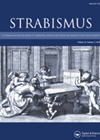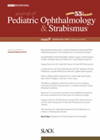
Journal Reviews
Diplopia after cataract surgery – risk factors
The risk factors for binocular diplopia after uncomplicated cataract surgery in adults were studied to analyse the patterns of ocular motility and clinical causes. This was a retrospective review of 40 patients; 25 female. Onset of diplopia was at a...
BT outcomes for accommodative esotropia
The purpose of this study was to study the effect of Botulinum Toxin (BT) in refractive and non-refractive accommodative esotropia unresponsive to glasses and poor compliance with glasses. This was a retrospective study of 114 patients who had BT for...
Outcomes of horizontal muscle transplantation
The authors propose the technique of transplantation of the resected muscle segment to the previously recessed muscle for correction of residual / recurrent strabismus in order to restrict surgery to one eye and avoid large recession of previously recessed rectus...
Augmented surgery for monocular elevation deficiency
The outcomes are described for augmented lateral rectus superior transposition in cases of acquired monocular elevation deficiency (MED) associated with large hypotropia in primary gaze. The lateral rectus was transposed superiorly and reinserted on sclera between the temporal margin of...
VA and stereo changes with increasing Bangerter filters
This study investigated the effect of monocular blur induced by Bangerter filters (BF) on both monocular and binocular visual acuity (VA) and stereoacuity in normal visual systems. Subjects included 24 healthy student volunteers aged 20.33 ±1.79 years; 22 female. One...
Central fixation testing in microtropia
This study compared the two assessment methods of the 4D prism test and ocular fixation assessment in order to identify micro strabismus with identity. The study included 112 children; 46 males and 66 females. Anisometropia was present in 108 patients...
Survey of parental experience of contact lens support
In this study, the service under evaluation is for paediatric aphakia patients. Soft contact lenses (CLs) are inserted at the time of surgery and remain in-situ for the immediate postoperative period. The aim is for families to undertake daily CLs...
Quantifying ductions and fields of BSV
The authors aimed to evaluate current clinical practice of quantifying ductions and fields of binocular single vision (BSV) in the UK and Ireland. An online questionnaire was used and was circulated via the British & Irish Orthoptic Society (BIOS) member...
Evaluation of a service providing sight impairment registration for stroke survivors
This service evaluation study of a hospital single centre stroke service was undertaken to determine reasons for declining sight registration, whether patients feel supported without registration and determine changes needed to improve registration processes. A review of existent data was...
Care pathway for isolated orbital blowout fractures
The authors conducted a literature review to inform the development of a care pathway for the assessment and management of adult fractures, specifically isolated fractures not combined with facial or systemic injury. Assessments included a core of Hess chart, field...
Effect of alcohol dependency on visual function
The purpose of this study was to evaluate visual function, attention and psychological profiles in consumer and abstainer alcohol dependency syndrome (ADS) patients in a Portuguese population. The study was a quantitative, descriptive, cross-sectional and correlational study over a one-year...
Outcomes after surgery for INS
The purpose of this study was to detail clinical and electrophysical outcomes after extraocular muscle surgery in adults with infantile nystagmus syndrome (INS). This was a single centre prospective case series of 81 patients aged 18-72 years (mean 36); 63%...






